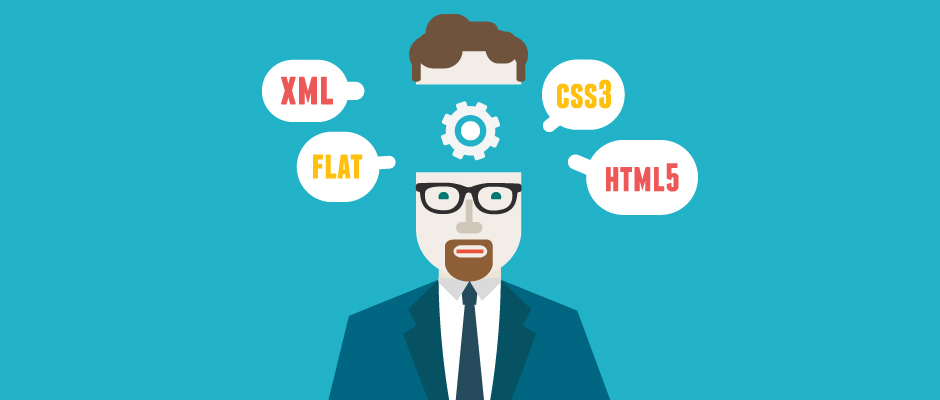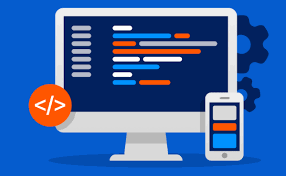 Web Front-end
Web Front-end
 Front-end Q&A
Front-end Q&A
 Describe the difference between shallow and full rendering in React testing.
Describe the difference between shallow and full rendering in React testing.
Describe the difference between shallow and full rendering in React testing.
Jul 06, 2025 am 02:32 AMShallow rendering tests a component in isolation, without children, while full rendering includes all child components. Shallow rendering is good for testing a component’s own logic and markup, offering faster execution and isolation from child behavior, but lacks full lifecycle and DOM interaction support. Full rendering excels in integration tests, accurately simulating real-world behavior like event handling, hooks, and async updates, though it's slower and requires more setup. Use shallow rendering to isolate and test a single component’s structure and props, and full rendering when testing interactions, user behavior, or lifecycle effects. Both approaches have trade-offs, and the choice depends on the test goals: component isolation vs. realistic integration.

When testing React components, the terms "shallow" and "full rendering" come up often. The main difference lies in how much of the component tree gets rendered during the test.

Shallow rendering only renders the component you're testing, without rendering its children. It's useful when you want to isolate the component and focus solely on its behavior and output. On the other hand, full rendering (sometimes called deep rendering) renders the entire component tree, including all child components. This gives you a more realistic representation of how the component behaves in a real app environment.

Here’s a closer look at each approach and when you might choose one over the other.
What is shallow rendering good for?
Shallow rendering works well when you want to test a component in isolation. Tools like Enzyme used to popularize this method because it allows developers to check the component’s own props, state, and UI structure without getting into the logic of child components.

For example:
- You have a
Buttoncomponent inside your tested component. - With shallow rendering, the
Buttonwon’t actually render — it’ll just show up as a tag in the rendered output. - That way, you don't accidentally write tests that fail because of changes in child components.
Use shallow rendering if:
- You’re focused on the component’s own logic and markup
- You want faster test execution
- You're not concerned with how deeply nested components behave
But keep in mind, shallow rendering doesn’t handle lifecycle methods as fully or DOM interactions, so it’s not ideal for testing things like click events or data fetching.
When should you use full rendering?
Full rendering is better suited for integration-style tests where you want to verify how components work together. Libraries like React Testing Library encourage this style by default, especially with render() from @testing-library/react.
Here are some scenarios where full rendering shines:
- You need to test how a component interacts with its children
- You're checking actual DOM updates after user actions
- You're testing context providers, hooks, or lifecycle effects
For instance: If your component fetches data when mounted and displays it, shallow rendering won’t trigger that effect. But with full rendering, you can wait for the data to load and assert the final output.
So if you care about real-world behavior — like event handling, DOM manipulation, or asynchronous updates — full rendering is the better choice.
Trade-offs between the two approaches
Each method has pros and cons depending on what you're trying to test:
Shallow rendering pros:
- Faster execution
- Component isolation
- Good for snapshot tests
Shallow rendering cons:
- Doesn’t capture child behavior
- Limited lifecycle simulation
- Less realistic DOM interaction
Full rendering pros:
- Realistic component interaction
- Better for user behavior simulation
- Supports async testing and hooks
Full rendering cons:
- Slower than shallow
- More setup needed (like mocks)
- Can be harder to debug when something breaks deep in the tree
Choosing between them really comes down to your test goals. If you're verifying internal logic or structure, shallow might be enough. If you're simulating real usage, go full.
Basically, it depends on what you're testing and how much depth you need. Shallow rendering helps you stay focused on the current component, while full rendering lets you see the bigger picture.
The above is the detailed content of Describe the difference between shallow and full rendering in React testing.. For more information, please follow other related articles on the PHP Chinese website!

Hot AI Tools

Undress AI Tool
Undress images for free

Undresser.AI Undress
AI-powered app for creating realistic nude photos

AI Clothes Remover
Online AI tool for removing clothes from photos.

Clothoff.io
AI clothes remover

Video Face Swap
Swap faces in any video effortlessly with our completely free AI face swap tool!

Hot Article

Hot Tools

Notepad++7.3.1
Easy-to-use and free code editor

SublimeText3 Chinese version
Chinese version, very easy to use

Zend Studio 13.0.1
Powerful PHP integrated development environment

Dreamweaver CS6
Visual web development tools

SublimeText3 Mac version
God-level code editing software (SublimeText3)

Hot Topics
 What are ARIA attributes
Jul 02, 2025 am 01:03 AM
What are ARIA attributes
Jul 02, 2025 am 01:03 AM
ARIAattributesenhancewebaccessibilityforuserswithdisabilitiesbyprovidingadditionalsemanticinformationtoassistivetechnologies.TheyareneededbecausemodernJavaScript-heavycomponentsoftenlackthebuilt-inaccessibilityfeaturesofnativeHTMLelements,andARIAfill
 How does React handle focus management and accessibility?
Jul 08, 2025 am 02:34 AM
How does React handle focus management and accessibility?
Jul 08, 2025 am 02:34 AM
React itself does not directly manage focus or accessibility, but provides tools to effectively deal with these issues. 1. Use Refs to programmatically manage focus, such as setting element focus through useRef; 2. Use ARIA attributes to improve accessibility, such as defining the structure and state of tab components; 3. Pay attention to keyboard navigation to ensure that the focus logic in components such as modal boxes is clear; 4. Try to use native HTML elements to reduce the workload and error risk of custom implementation; 5. React assists accessibility by controlling the DOM and adding ARIA attributes, but the correct use still depends on developers.
 How to minimize HTTP requests
Jul 02, 2025 am 01:18 AM
How to minimize HTTP requests
Jul 02, 2025 am 01:18 AM
Let’s talk about the key points directly: Merging resources, reducing dependencies, and utilizing caches are the core methods to reduce HTTP requests. 1. Merge CSS and JavaScript files, merge files in the production environment through building tools, and retain the development modular structure; 2. Use picture Sprite or inline Base64 pictures to reduce the number of image requests, which is suitable for static small icons; 3. Set browser caching strategy, and accelerate resource loading with CDN to speed up resource loading, improve access speed and disperse server pressure; 4. Delay loading non-critical resources, such as using loading="lazy" or asynchronous loading scripts, reduce initial requests, and be careful not to affect user experience. These methods can significantly optimize web page loading performance, especially on mobile or poor network
 Describe the difference between shallow and full rendering in React testing.
Jul 06, 2025 am 02:32 AM
Describe the difference between shallow and full rendering in React testing.
Jul 06, 2025 am 02:32 AM
Shallowrenderingtestsacomponentinisolation,withoutchildren,whilefullrenderingincludesallchildcomponents.Shallowrenderingisgoodfortestingacomponent’sownlogicandmarkup,offeringfasterexecutionandisolationfromchildbehavior,butlacksfulllifecycleandDOMinte
 What is the significance of the StrictMode component in React?
Jul 06, 2025 am 02:33 AM
What is the significance of the StrictMode component in React?
Jul 06, 2025 am 02:33 AM
StrictMode does not render any visual content in React, but it is very useful during development. Its main function is to help developers identify potential problems, especially those that may cause bugs or unexpected behavior in complex applications. Specifically, it flags unsafe lifecycle methods, recognizes side effects in render functions, and warns about the use of old string refAPI. In addition, it can expose these side effects by intentionally repeating calls to certain functions, thereby prompting developers to move related operations to appropriate locations, such as the useEffect hook. At the same time, it encourages the use of newer ref methods such as useRef or callback ref instead of string ref. To use Stri effectively
 Vue with TypeScript Integration Guide
Jul 05, 2025 am 02:29 AM
Vue with TypeScript Integration Guide
Jul 05, 2025 am 02:29 AM
Create TypeScript-enabled projects using VueCLI or Vite, which can be quickly initialized through interactive selection features or using templates. Use tags in components to implement type inference with defineComponent, and it is recommended to explicitly declare props and emits types, and use interface or type to define complex structures. It is recommended to explicitly label types when using ref and reactive in setup functions to improve code maintainability and collaboration efficiency.
 How to handle forms in Vue
Jul 04, 2025 am 03:10 AM
How to handle forms in Vue
Jul 04, 2025 am 03:10 AM
There are three key points to be mastered when processing Vue forms: 1. Use v-model to achieve two-way binding and synchronize form data; 2. Implement verification logic to ensure input compliance; 3. Control the submission behavior and process requests and status feedback. In Vue, form elements such as input boxes, check boxes, etc. can be bound to data attributes through v-model, such as automatically synchronizing user input; for multiple selection scenarios of check boxes, the binding field should be initialized into an array to correctly store multiple selected values. Form verification can be implemented through custom functions or third-party libraries. Common practices include checking whether the field is empty, using a regular verification format, and displaying prompt information when errors are wrong; for example, writing a validateForm method to return the error message object of each field. You should use it when submitting
 Server-Side Rendering with Next.js Explained
Jul 23, 2025 am 01:39 AM
Server-Side Rendering with Next.js Explained
Jul 23, 2025 am 01:39 AM
Server-siderendering(SSR)inNext.jsgeneratesHTMLontheserverforeachrequest,improvingperformanceandSEO.1.SSRisidealfordynamiccontentthatchangesfrequently,suchasuserdashboards.2.ItusesgetServerSidePropstofetchdataperrequestandpassittothecomponent.3.UseSS





